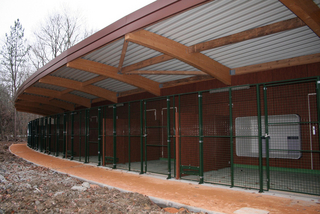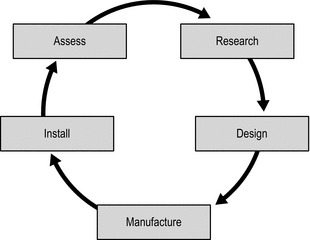16 After reading this case study, students will be able to: • Appreciate the importance of innovation and product quality within a small growing business. • Understand some of the challenges facing a small business within the wider veterinary-related sector in its efforts to export. • Apply business concepts to suggest how the particular company depicted in this case study might exploit the new market opportunities they have identified. Other animal charities including the RSPCA and Dog’s Trust, followed by Revenue and Customs, who appointed Parasol to develop a rolling programme of nine kennel projects around the UK, placed orders for Parasol’s modular animal housing system. In 2003, the UK Ministry of Defence (MOD) placed the first of many orders for the Parasol modular animal housing system. Twelve kennel schemes have since been completed, and in 2010 Parasol designed and manufactured individual kennel ‘pods’ for the Société pour Protection des Animaux in Paris (Figure 16.1). Today, Parasol Kennels is the preferred supplier for the UK Border Agency (UKBA) and of the MOD dog housing needs. Key to this success is that Parasol’s kennels exceed animal welfare regulations and comply with the MOD ‘JSP315 Scale 14 requirements for Service Animals’. Those involved in animal housing within the public sector (PS) are exceptionally knowledgeable about the operational side of managing a kennel complex and the importance of animal welfare. It is their duty to maximize a professional working or service dog’s potential in terms of performance, and keep veterinary expenses to a minimum. A fully trained detection dog, for example, is valued at around £25 k (Griffiths, 2012). Like humans, dogs will thrive and perform their tasks better and for longer if they are happily and suitably housed. So, in addition to their individual exercise and sleep compartments, access needs to be provided between all the exercise areas to allow the dogs to socialize. Parasol Kennels invests substantially in design, research and development. The reason for doing so is to ensure that its animal housing systems are of premium quality, performing to the best of their ability, and are sold at the most competitive price. In fact this is the basis for its business model. As innovation is at the heart of everything it does, Parasol reacts quickly to changing market conditions and requirements, while being proactive in inventing new solutions to help solve difficult customer challenges. Learning is at the core of Parasol’s culture (Figure 16.2); continual assessment of customer needs initiates product innovation and enhancement, delivering business and customer value. For example, when one of Parasol’s military buildings was independently measured by DREAM – the world’s leading design and assessment method for sustainable buildings – it achieved the performance rating of ‘Excellent’.
Parasol Kennels
innovative animal housing
LEARNING OUTCOMES
Introduction
The UK animal housing market
Parasol’s business model and involvement in the UK animal housing market
![]()
Stay updated, free articles. Join our Telegram channel

Full access? Get Clinical Tree


Veterian Key
Fastest Veterinary Medicine Insight Engine


